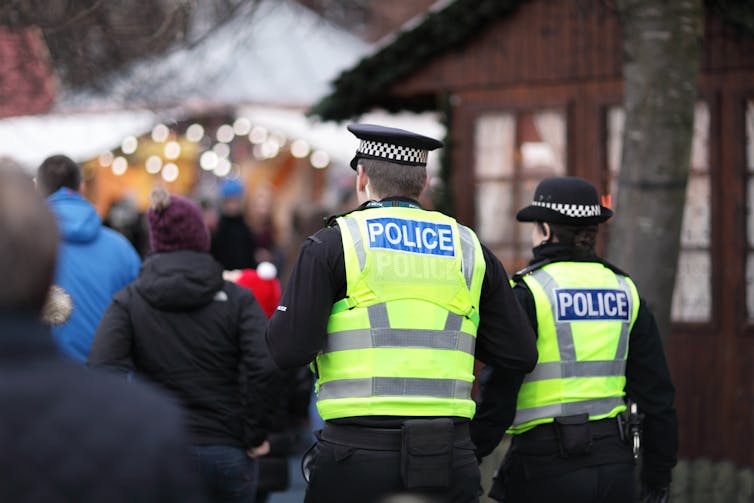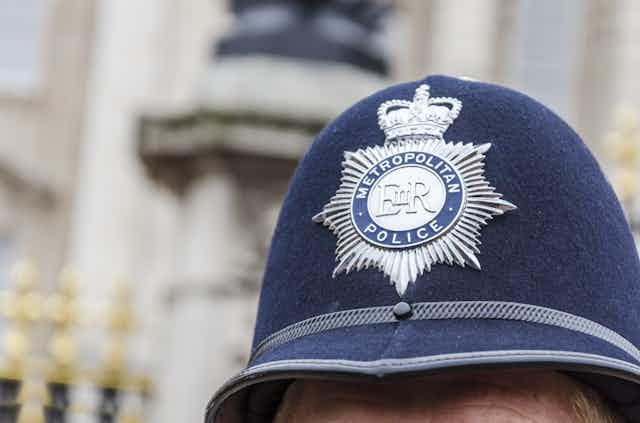The series of scandals that has hit the UK’s biggest police force suggests longstanding and serious underlying problems. The newly published Casey review details these problems in depth, adding another stain to the Metropolitan police’s reputation.
The report found that institutional misogyny, racism and homophobia are rampant throughout the Met, the organisation’s recruitment and vetting is weak, and internal processes fail to adequately tackle poor performance.
But how different is the Met from the 44 other police forces in England and Wales?
The Met generally deals with more violent offences, such as murder and robbery, than other forces. It also has the highest percentage of firearms operations and the highest number of firearms officers.
Firearms roles are seen as the most prestigious and lucrative jobs in the force. And it is these specialist units where the Casey review identified “some of the worst cultures, behaviours and practices” in terms of bullying, racism and sexism, and found that “normal rules do not seem to apply or be applied”. Newcomers to these groups often have to adapt to these established, toxic cultural norms if they want to succeed.
The review described sexist attitudes towards the (very few) female firearms officers, and reported officers being granted immunity and even encouraged to break rules.
The Casey review suggests that the institutional sexism in the Met doesn’t just affect officers, but also the women who need the Met’s services. As one officer told Casey review investigators, the force’s detection rate for rate is so low “you may as well say it’s legal in London”.
In recent years there has been an explosion in the number of offences being reported that predominantly affect women, including domestic abuse and rape.
Currently, only 30% of the Met’s workforce is female, less than the national average of 34.9% in police forces. Other forces fare a little better in comparison, with West Yorkshire police having 42% of its workforce as female, one of the highest in the country.
At leadership levels there is an even greater discrepancy between genders – 76% of Met chief inspectors are male. This is higher than most other forces, as 70% of Greater Manchester police and 64% West Midlands police chief inspectors are male.
In general, forces are moving in the right direction when it comes to gender representation. In 2021, eight forces hired more women than men. And in senior leadership, 40% of chief constables are now female, a nearly five-fold increase since 2019.
Increased representation on its own doesn’t automatically lead to culture change. Research suggests that women are more likely to use transformational leadership techniques in the workplace, such as cooperation and consultation with the workforce, which can help foster an inclusive environment. But in policing, senior women are still frequently discriminated against and feel that they struggle to have their authority recognised and accepted by the rank-and-file.
Overall, the differences women bring to policing appear to be underappreciated by frontline officers, with leaders also failing to adequately value and reward their contributions.
Ethnic diversity
The Metropolitan police currently has the most ethnically diverse workforce, with 16.7% of officers identifying as originating from an ethnic minority background. However, this is still well below the 46% of Londoners who belong to an ethnic minority.
The national picture is even less promising. In England and Wales, the proportion of ethnic minority police officers currently sits at 8.1%, compared to a general population rate of 18.3%. Under representation is particularly noticeable in the senior positions, compared with the rank-and-file. Of those at chief inspector rank or above, 5.5% belong to a minority ethnic group.

The police are failing to attract a more diverse array of police officers, despite repeated pledges to do so. Central to the drive to diversify policing is the belief that officers belonging to minority groups can help build bridges between police and communities.
However, it should be noted that many ethnic minorities often believe that ethnic minority officers continue to represent an institutionally racist organisation, regardless of background. And research from the US finds inconclusive evidence of the effectiveness of diversity drives in decreasing police violence towards ethnic minorities.
Losing trust
It might be easy for other forces to distance themselves from criticism of the Met, and claim the issues are specific to one organisation. But the Casey report should serve as a warning sign to other forces that they too need to rid themselves of all and any institutional sexism and racism.
Just over half of Londoners perceive the Met as a reliable institution, trust in the police has eroded nationwide. Almost half of the population state they no longer trust police officers.
Trust, once lost, can be hard to restore. The Casey report states that not all forces are fully cognisant of the risks these issues pose to their reputation.
At the core of the policing mandate is a duty to protect the public. Protecting officers who continue to perpetuate a sexist and bigoted culture is an anathema to this. Policing needs to change so that it attracts the right people for the job, and can show the public that they are deserving of their trust.

